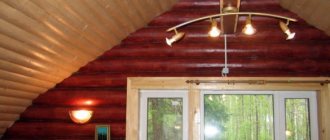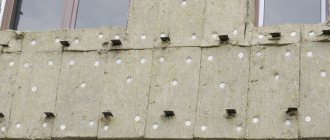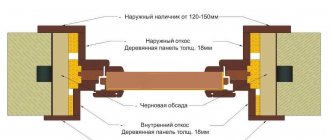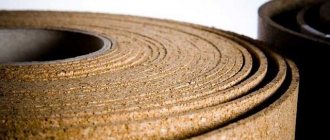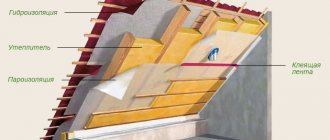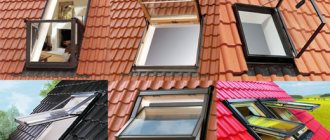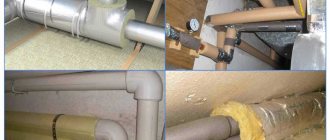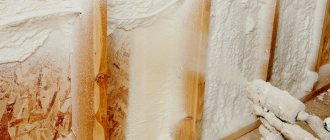It is no secret that foam rubber has been used as insulation for a long time. In other words, this is a time-tested technology.
In this article we will talk about how this insulation is made, how it is used and what its main advantages are over other heat insulators used in everyday life.
Sealing of window frames
About insulation
The microclimate of the room depends on the windows. Due to uninsulated windows, the glass fogs up, cracks and fungus appear on the slopes, and there is always a draft and street noise. To effectively insulate windows, it is necessary to determine the reasons for low thermal insulation.
Most often they are the following:
Wooden windows
First of all, insulation is required for old window structures for the following reasons:
- Previously, glass was secured to the frame with special putty. Over time, it dries out and becomes stained;
- the frames dry out, so cracks and gaps appear between the glazing bead and the glass;
- the sashes are deformed and are not held tightly to the frame.
Plastic windows
It is mistakenly believed that such windows are quite airtight and therefore do not need insulation. Unfortunately, after a few years the seal collapses, and insulation is indispensable.
There are other reasons why it is necessary to deal with plastic windows:
- violation of window installation technology;
- distortion of the window structure due to shrinkage of the house;
- factory defect of window design;
- mechanical damage to structural elements.
Production of foam rubber
To produce the material you need two components:
- Polyester;
- Isocyanate.
Water is also used.
When mixed, organic substances mixed with water form carbon dioxide. As a result of foaming, a hollow, dough-like mass is created that is quite soft and quite strong. After hardening, the foam rubber only needs to be formed into slabs/pieces of the desired form factor. We tend to associate foam rubber with the color yellow, but in fact it can be painted in any color.
So, let's conclude: foam rubber is one of the varieties of polyurethane.
The role of thermal conductivity coefficient when making architectural and construction decisions
The thermal conductivity of solids, which are all building materials, is manifested due to the transfer of heat occurring as a result of vibrations of the crystal lattice.
The high thermal conductivity of building materials is unacceptable for the construction of architectural structures. The greater the thermal conductivity, the lower the thermal insulation qualities of the material necessary to maintain a room temperature different from the ambient temperature.
Building materials with low thermal conductivity help maintain the achieved temperature in the room, regardless of weather conditions, due to minimal maintenance of diffusion between particles of different temperatures.
The lower the thermal conductivity coefficient of a material, the better its thermal insulation qualities.
Good thermal insulation will eliminate drafts, cold walls, rapid cooling, freezing or heating of the room, and will allow you to significantly save on heating or cooling devices.
Types of foam insulation
At the beginning of the article, it was already noted that this material is well suited for thermal insulation of window openings. But it is worth noting that there are different options for foam insulation.
Foam rubber is presented in the form:
- Cut strips;
- Coils (long strips);
Also, when specifying characteristics, the profile size, thickness and height of the strip are often indicated.
In addition, there is self-adhesive foam rubber and insulation without an adhesive base.
Another important characteristic is the density of the material. However, this parameter is rarely specified. If you try the foam rubber to the touch, it should be as elastic as possible. This property will allow it to be used in cracks of different sizes and to “plug” the insulation into even a small crack.
Pasting
Foam tape with adhesive backing
Tapes of this type have a wide grip. The adhesive composition is applied during manufacturing (self-adhesive type) or during installation work.
To create self-adhesive tape, polyvinyl chloride, rubber and polyethylene foam (foam rubber) are used.
Due to the plasticity of these materials, the tape is easily compressed to the size of the gap. To ensure that the insulation does not stand out against the background of the window, dyes are added: black, brown, white.
Typically the packaging will indicate the size of the gap that the tape will cover. Popular options with sizes 3 - 7 mm.
Foam rubber tapes were the first to be used. Their popularity is explained by a number of advantages:
- high compression ratio;
- the frame does not collapse in places of insulation;
- low cost;
- high protection efficiency.
Such tapes have negative qualities:
- insufficient efficiency for large gaps;
- short service life. Effective during one winter season;
- in cheap models, the adhesive tape does not stick well;
- low resistance to water.
Important!
It is more convenient to use self-adhesive tapes on foam rubber for insulation.
They stay on the window longer and regulate the degree of pressing of the sashes.
Sealing
D - shaped tubular seal with adhesive base
Tapes of this type have a hollow tubular shape, which is why heat is retained. The materials chosen are rubber and polyvinyl chloride.
On one side of the tape there is a groove hook or an adhesive coating with paper protection.
It is believed that the groove is more resistant to mechanical stress.
The following qualities are considered advantages:
- gaps up to 0.7 cm are blocked;
- withstands any temperature changes;
- It is possible to choose a color to match the color of the frame;
- the use of the window is not limited;
- affordable price.
But most of the disadvantages relate to adhesive tapes:
- not suitable for all window designs;
- when temperature changes, the adhesive layer is destroyed;
- with frequent deformations, peeling occurs in the glued places;
- The foam tape quickly gets wet and dust sticks to it. For this reason, frequent replacements are carried out.
Tubular seals are checked annually. If necessary, individual fragments are replaced.
Groove sealing tape
On one side of this product there is a protrusion that looks like a brush. Its task is to hold the material in the groove prepared for this. It can also be made not only from foam rubber, but also from rubber.
In the photo - groove sealing tape
Of course, the second option is preferable, since it will last you much longer than a foam seal. In addition, such a product can take different shapes.
Types of penofol
Manufacturers offer different penofol options for different functionality. The generally accepted classification divides it into three varieties:
- A type – one-sided penofol (aluminum film is applied to one side of the polyethylene after foaming).
This type is used more often as an additional heat insulator with foam; Penofol type A - B type – penofol foil-coated on both sides, has universal use, including for autonomous insulation;
Penofol type B
C type – self-adhesive. On one side there is a layer of reflector on aluminum, on the opposite side there is a moisture-resistant adhesive on polyethylene foam, which is protected by a sticker. This penofol is more convenient for finishing areas that are difficult to reach. No special installation tools are required during installation.
Penofol type C
In addition to these standardized types, the developers have also prepared modifications that occupy a separate niche in the building materials market:
- ALP type - penofol with lamination, on the foil side there is a plastic film. This type of material is used for insulation of agricultural buildings operated in a not too aggressive environment;
- M or R types – one-sided foil with a corrugated “top”;
- AIR – penofol used to prepare air exhaust structures;
- Super NET (from the word “Network”) - the main task of this type of penofol is insulation and steam protection for air vents, pipelines or heating mains.
Types of window insulation
Almost all housing built before the early 90s of the last century was traditionally equipped with wooden window frames. And although wooden windows have a number of undeniable advantages, such as environmental friendliness, low thermal conductivity and aesthetic appeal, over time the frames dried out and warped, and cold penetrated into the resulting gaps in the home.
And what lengths our mothers and grandmothers went to in order to insulate the windows.
They used:
- and newspapers torn into strips;
- and rags glued to the frame using homemade paste or soap;
- Sometimes even asbestos, which is unsafe for health, was used.
And in semi-abandoned villages they still insulate the blind windows in huts with cotton wool, lining the space between the frames with it.
Generalizations of Fourier's law
Expanded polystyrene PSB-S 25: technical characteristics and areas of application
It should be noted that Fourier’s law does not take into account the inertia of the thermal conduction process, that is, in this model, a temperature change at some point instantly spreads to the entire body. Fourier's law is not applicable to describe high-frequency processes (and, accordingly, processes whose Fourier series expansion has significant high-frequency harmonics). Examples of such processes are the propagation of ultrasound, shock waves, etc. Maxwell was the first to introduce inertia into the transport equations, and in 1948 Cattaneo proposed a version of Fourier’s law with a relaxation term:
\tau\frac{\partial\mathbf{q}}{\partial t}=-\left(\mathbf{q}+\varkappa\,\nabla T\right).
If the relaxation time \tau is negligible, then this equation becomes Fourier's law.
Modern insulation for windows
Since the days of newspapers and cotton wool, which were used to insulate windows, progress has stepped far forward. And the windows in new buildings sparkle with brand new double-glazed windows in plastic frames.
Nevertheless, the insulation of plastic windows remains relevant. The modern market offers a variety of materials for insulation, all of them are quite effective and affordable for the average citizen.
Based on the type of material from which they are made, insulation materials are classified into:
- Rubber . These insulation materials are one of the cheapest and most effective heat guards in your home. With this method, the insulation is glued to the plastic frame or nailed to the wood with a furniture stapler. No matter how carefully you handle rubber, its service life is short.
Photo of rubber insulation
Advice! It is advisable to use rubber insulation only if it is not exposed to moisture. Otherwise, it will become deformed and become unusable faster.
- Polyethylene foam . Foamed polyethylene, most often produced in the form of a rope, excellently conserves heat, provides sound insulation and protects against condensation. The high price of the material pays off over the years of its service.
Foamed polyethylene harness
- Polyvinyl chloride . PVC is a reliable, environmentally friendly material, safe to use. Polyvinyl chloride insulation is practically indeformable and has an increased frost resistance coefficient.
Roll of PVC insulation
- Foam rubber . Foam rubber for insulating windows was used by our grandmothers. But over time, pieces of foam rubber plugged into the cracks of window frames were transformed into modern insulation materials that provide heat and sound insulation for windows.
Foam strips
It is the insulation of windows with foam rubber that will be discussed below.
General properties of foam rubber
Modern foam insulation is made from high-strength material that meets sanitary standards and is absolutely safe to use. Foam self-adhesive window insulation is sold in precisely sized rolls. Less often - in the form of cut strips of various lengths.
Foam rubber, although it does not last long, seals cracks and gaps well, and also provides the proper level of sound insulation from the street. Insulation of a loggia, front door, windows - these are not all the areas of application of this universal material.
Arbolit
Arbolite (from the French arbre "wood") is a lightweight concrete based on a cement binder, organic fillers (sawdust, crushed straw, flax, hemp, up to 80-90% of the volume) and chemical additives. Also known as wood concrete. To mineralize the filler, calcium chloride (food additive E509), calcium nitrate, liquid glass or other substances that block the negative effect of organic substances on cement hardening are used. Due to the use primarily of cement, as a very non-ecological material in the manufacturing process (due to large emissions of pollutants into the atmosphere), and other components are difficult to classify as completely safe, I will not consider wood concrete in an article about environmentally friendly insulation materials. Arbolite will be presented in the group of warm concrete.
Installation
When insulating windows using foam rubber, follow the following sequence:
- We dismantle the previous insulation or its remains, if there was one.
- Initially, the glass and frames with which the insulating strip will come into contact must be clean. We remove the remaining paint and glue from the previous insulation. It is best to wipe the glass itself. (This is especially necessary if you plan to stick thin strips at the junction of glass and frame). After cleaning, go over the frame with a rag to remove any remaining dust.
- Degreasing the surface is an important stage of work. An alcohol solution will do. Thanks to this stage, the self-adhesive foam will stick well and will not fall off.
- We evaluate the gaps between the frame and the wall. If the gap is very large, it is better to use wide strips, driving them into the gap.
- In the case when the wind blows into the windows through narrow cracks or when you need to insulate the gap between the sash and the frame, it is better to use thin (in the form of a narrow strip) self-adhesive foam rubber. Let us remind you that all contact points between the adhesive side and the surface must be degreased.
- You need to carefully glue a special tape over the cracks sealed with foam rubber.
This tape does not leave marks after removal, so you don’t have to worry about the paintwork of the frame.
After sticking the tape, the process of thermal insulation of windows can be considered complete. Until spring, foam rubber will reliably protect your home from the loss of precious heat.
By the way, did you use foam sealant for windows last winter? If so, which manufacturer?
Additional information can be gleaned from a video in which an employee of one of the online stores will talk about the principles of installing foam rubber insulation.
Price issue
Note that foam insulation is far from the most expensive of the possible options. EPDM seals, especially foreign ones, are much more expensive.
Below is a table from one of the online stores, where you can see the cost of insulation without a self-adhesive base.
Size, mmLength, mPrice, rub
| 20x20 | 10 | 90 |
| 20x30 | 10 | 120 |
| 20x40 | 10 | 150 |
| 30x30 | 10 | 160 |
Self-adhesive foam tape for window insulation:
Dimensions, mmLength, mCost, rub. ManufacturerCountry of manufacturer
| 10x10 | 10 | 40 | LLC "PIK" | Russia |
| 20×20 | 6 | 68 | LLC "PIK" | Russia |
| 30×20 | 6 | 26 | ||
| 8×8 | 10.8 | 70 | Polipak | Türkiye |
Let's calculate the cost of foam tape for one window using an example.
The window in the example has a width of 1300 mm and a height of 1400, which means that the insulation perimeter requires 1300 + 1300 + 1400 + 1400 mm of tape = 5400 mm or 5.4 m. If we additionally insulate not only the joint between the frame and the wall, but also the joint frames and sashes will additionally come out:
1400mm x 2 + 700 mm x 2 = 4200 m or 4.2 m. Thus, to maximum insulate our window we need 5.4 + 4.2 = 9.6 m of insulation. To do this, one package of Polypack worth 70 rubles will be enough for us. You will also need a special tape for covering windows, but it is also inexpensive.
After this calculation, it becomes more clear why people choose foam rubber as insulation for windows. It's cheap material.
So, we calculated the cost and purchased the required amount of material. Let's move on to installation.
Table of thermal conductivity of materials on Cl...
| Material | Density, kg/m3 | Thermal conductivity, W/(m deg) | Heat capacity, J/(kg deg) |
| Rubble masonry made of medium-density stones | 2000 | 1.35 | 880 |
| Gas silicate masonry | 630…820 | 0.26…0.34 | 880 |
| Masonry made of gas silicate thermal insulation boards | 540 | 0.24 | 880 |
| Masonry of ordinary clay bricks on cement-perlite mortar | 1600 | 0.47 | 880 |
| Masonry of ordinary clay bricks (GOST 530-80) on cement-sand mortar | 1800 | 0.56 | 880 |
| Masonry of ordinary clay bricks on cement-slag mortar | 1700 | 0.52 | 880 |
| Masonry of ceramic hollow bricks with cement-sand mortar | 1000…1400 | 0.35…0.47 | 880 |
| Small brick masonry | 1730 | 0.8 | 880 |
| Masonry made of hollow wall blocks | 1220…1460 | 0.5…0.65 | 880 |
| Masonry made of 11-hollow silicate bricks with cement-sand mortar | 1500 | 0.64 | 880 |
| Masonry made of 14-hollow silicate bricks with cement-sand mortar | 1400 | 0.52 | 880 |
| Sand-lime brick masonry (GOST 379-79) with cement-sand mortar | 1800 | 0.7 | 880 |
| Triple brick masonry (GOST 648-73) with cement-sand mortar | 1000…1200 | 0.29…0.35 | 880 |
| Cellular brick masonry | 1300 | 0.5 | 880 |
| Slag brick masonry with cement-sand mortar | 1500 | 0.52 | 880 |
| Masonry "Poroton" | 800 | 0.31 | 900 |
| Maple | 620…750 | 0.19 | — |
| Leather | 800…1000 | 0.14…0.16 | — |
| Technical composites | — | 0.3…2 | — |
| Oil paint (enamel) | 1030…2045 | 0.18…0.4 | 650…2000 |
| Silicon | 2000…2330 | 148 | 714 |
| Organosilicon polymer KM-9 | 1160 | 0.2 | 1150 |
Insulating windows yourself with foam rubber
The instructions for insulating wooden windows using foam rubber are extremely simple:
- Before starting work, you need to carefully inspect the window for the integrity and cleanliness of the glass and frames. Therefore, the first step is to wash the windows.
Insulation will last much longer on clean frames
Note! The cleanliness of the window is a guarantee of high-quality insulation - adhesive materials adhere much better to a clean, stable surface. Ideally, it’s also low-fat.
- Sealing cracks. If the gaps and cracks are large, it is better to use strips of foam rubber, filling the cavities with them. After the sources of cold air are blocked, stick a clean rag or special tape over the foam.
Tips for choosing
As a rule, a tape is selected based on three indicators.
By material
- Foam rubber ― has been used for insulation since ancient times. Currently it is included in the tape.
Main advantages:
- low cost;
- high elasticity, allowing you to close gaps of different sizes.
There are also disadvantages:
- Due to the porous structure, moisture is quickly absorbed. The drying process takes a very long time;
- low durability. With prolonged use, the material turns yellow and crumbles.
- Polyvinyl chloride (PVC) ― material with high strength and adhesiveness. It is not afraid of humidity and temperature fluctuations. The tapes are fixed on any surface and stretch well.
Unfortunately, such tapes are rarely used for window insulation, as they increase the cost of window construction by up to 15%.
- Rubber - used to make two types of tapes: self-adhesive and sealing.
Tubular seals with a groove
Self-adhesive tapes are made on the basis of synthetic rubber and have all its positive qualities: elasticity and resistance to temperature fluctuations.
Rubber seals are not afraid of aggressive environments, so they last a very long time.
- Polyurethane foam (PPE) is a porous material made of foamed polyethylene.
Due to their high elasticity, the tapes are very effective for small gaps.
Good insulating qualities. Due to the presence of air in the structure, a thermal insulating environment is created. Its use is limited by its ability to transform into a toxic liquid state at high temperatures.
By manufacturer
In construction stores you can find tapes from different manufacturers.
However, only materials from the following brands are in demand:
- Russia - Profitrast, Economy, Zubr.
- Germany - KIMTEC, Deventer.
- Poland - Sanok.
Domestic manufacturers, as a rule, work using European technologies and produce high-quality material no worse than foreign samples. At the same time, German and Polish ribbons, although more expensive, last longer.
By cost
Insulating tapes are sold retail and in coils from 6 to 10 meters.
Since a standard window requires about 5 meters of self-adhesive insulation, purchases are most often made at retail.
The price range is very wide.
For a linear meter of Russian material you need to pay up to 15 rubles, and the most expensive German rubber insulation will cost 50 rubles.
When choosing, it’s easy to calculate how much it will cost to insulate an apartment with any number of windows.
Table of thermal conductivity of materials on Pli-
| Material | Density, kg/m3 | Thermal conductivity, W/(m deg) | Heat capacity, J/(kg deg) |
| Pressed paper plate | 600 | 0.07 | — |
| Cork plate | 80…500 | 0.043…0.055 | 1850 |
| Facing tiles, tiles | 2000 | 1.05 | — |
| Thermal insulation tile PMTB-2 | — | 0.04 | — |
| Alabaster slabs | — | 0.47 | 750 |
| Gypsum slabs GOST 6428 | 1000…1200 | 0.23…0.35 | 840 |
| Wood-fiber and particle boards (GOST 4598-74, GOST 10632-77) | 200…1000 | 0.06…0.15 | 2300 |
| Slabs made of expanded clay concrete | 400…600 | 0.23 | — |
| Polystyrene concrete slabs GOST R 51263-99 | 200…300 | 0.082 | — |
| Resol-formaldehyde foam boards (GOST 20916-75) | 40…100 | 0.038…0.047 | 1680 |
| Plates made of glass staple fiber with a synthetic binder (GOST 10499-78) | 50 | 0.056 | 840 |
| Slabs made of cellular concrete GOST 5742-76 | 350…400 | 0.093…0.104 | — |
| Reed slabs | 200…300 | 0.06…0.07 | 2300 |
| Silica slabs | 0.07 | — | |
| Flax insulating slabs | 250 | 0.054 | 2300 |
| Mineral wool slabs with bitumen binder grade 200 GOST 10140-80 | 150…200 | 0.058 | — |
| Mineral wool slabs with synthetic binder grade 200 GOST 9573-96 | 225 | 0.054 | — |
| Mineral wool slabs with synthetic bond (Finland) | 170…230 | 0.042…0.044 | — |
| Mineral wool slabs of increased rigidity GOST 22950-95 | 200 | 0.052 | 840 |
| Mineral wool slabs of increased rigidity with an organophosphate binder (TU 21-RSFSR-3-72-76) | 200 | 0.064 | 840 |
| Semi-rigid mineral wool slabs with starch binder | 125…200 | 0.056…0.07 | 840 |
| Mineral wool slabs with synthetic and bitumen binders | — | 0.048…0.091 | — |
| Soft, semi-rigid and hard mineral wool slabs with synthetic and bitumen binders (GOST 9573-82, GOST 10140-80, GOST 12394-66) | 50…350 | 0.048…0.091 | 840 |
| Foam plastic boards based on resol phenol-formaldehyde resins GOST 20916-87 | 80…100 | 0.045 | — |
| Expanded polystyrene boards GOST 15588-86 without pressing | 30…35 | 0.038 | — |
| Polystyrene foam plates (extrusion) TU 2244-001-47547616-00 | 32 | 0.029 | — |
| Perlite-bitumen slabs GOST 16136-80 | 300 | 0.087 | — |
| Perlite-fiber slabs | 150 | 0.05 | — |
| Perlite-phosphogel slabs GOST 21500-76 | 250 | 0.076 | — |
| Perlito-1 slabs Plastic concrete TU 480-1-145-74 | 150 | 0.044 | — |
| Perlite cement slabs | — | 0.08 | — |
| Construction slabs made of porous concrete | 500…800 | 0.22…0.29 | — |
| Thermobitumen thermal insulation slabs | 200…300 | 0.065…0.075 | — |
| Peat thermal insulation slabs (GOST 4861-74) | 200…300 | 0.052…0.064 | 2300 |
| Fiberboard slabs (GOST 8928-81) and wood concrete (GOST 19222-84) on Portland cement | 300…800 | 0.07…0.16 | 2300 |
Concrete M300: characteristics and scope
Features of preparing windows for insulation
Preparing a window for insulation with tape is almost no different from preparation for other insulation materials. At the same time, there are some peculiarities.
The main stages are as follows:
- Everything is removed from the windowsill. The blinds are removed from the window.
- The frames are washed with soapy water and then dried. The tape requires a dry and grease-free surface.
- The glass is carefully inspected. Wooden windows may have cracked glass. They must be replaced as they are a source of heat loss.
- Grooves are prepared for the sealing tape. They should not contain old tape, dirt or paint.
- Before starting work, they determine the places where cold air comes from the street. They are insulated first. Weak points are the sashes, slopes, and window sills.
What else is insulated with foam rubber?
Foam insulation is a universal material, as it is used in various fields. And this demand is explained by certain performance qualities. For example, foam insulation is in great demand when insulating windows. Its structure is designed in such a way that there is a small number of cells. The material has low breathability and a limited degree of heat conductivity.
Foam insulation is equally in demand for thermal insulation of individual buildings or public premises. Foam rubber for insulating a house or apartment is used in the form of strips or sheets.
If you use strips of foam rubber, you can paste over not only windows, but also doorways. Maximum efficiency from the use of strips is achieved when the covered frame is closed and rarely opens. Using this material, you can seal a gap up to 1 cm wide.
On video, foam insulation for doors:
Foam rubber strips can be used to insulate not only individual windows, but also loggias, balconies, and pipes. In this case, all work can be done with your own hands. If you buy the product in sheets, then it is advisable to use it for insulation of heating or water. This way, you can protect them from freezing damage in the future.
Foam seal is a material that today has a wide range of applications. Most often, the product is used for sealing window openings. By spending a little time and effort, you can get a high-quality design and reduce heat loss. In addition to the window opening, foam rubber sealant will be an excellent insulation for pipes, doors, balconies or loggia.
Properties
There are many areas of application of sand and any construction necessarily uses sand for the components of the building:
production of the foundation of the building;
Making the foundation
concrete floors, slabs or columns, etc.;
Concrete floors
- used in the manufacture of filters, for example under a concrete structure;
- even for making glass.
There are also many varieties of sand, and therefore the properties of each are different.
There are sands that are formed:
in a natural way;
Natural
with artificial processing.
They differ in composition, size and even processing. In nature, sand is obtained through the natural breakdown of larger rocks of minerals into small grains of sand. But this takes a lot of time.
The process can be accelerated thanks to modern extraction methods.
Afterwards, other components are added to the sand in various proportions, giving additional properties to the finished sand material.
Sealing window openings
We will talk about sealing the window opening, which is necessary for thermal insulation (protects against drafts, prevents heat loss in winter), but not only.
Window insulation maintains a comfortable microclimate in the apartment during hot summers; prevents dust, street odors, and insects from entering the house; dramatically reduces the noise level, which is especially important if your windows overlook a highway or tram line.
First of all, window insulation is necessary for old wooden frames (a high-quality and well-installed plastic window does not always require additional insulation measures).
There is one caveat: in the old days, glass was often installed in the frame using a special mastic, and it tends to crumble over time. The paint on the frames is cracking, and the wood itself is cracking over time. Small cracks should be filled with sealant before laying insulation.
Obviously, the main requirement for window insulation is its quality. When selecting, you also need to take into account the specifics of the cracks on your window - width, shape.
Determination methods
This information is obtained through the process of measuring thermal resistance using special equipment. The procedure itself and the technical means used are regulated by state standard 7076-99. It describes the requirements for the sample, device, calibration and allows testing only according to two schemes - asymmetrical and symmetrical.
The essence of both methods is that a stationary heat flow is created that passes through a flat sample. The thickness of the sample is known, and the flow direction is chosen perpendicular to the largest faces. During the research process, the heat flux density is measured, as well as the temperature of the opposite faces.
The number of samples that must be used for the purity of the experiment is regulated for each specific type of concrete. As a rule, such information is contained in the state standard for a specific material. In the case where GOST does not contain such data, the number of samples is chosen to be five.
During the test, certain conditions must be maintained in the room: the relative humidity level must be within 10% of the 50% mark. The absolute temperature during testing should be in the range of 290-300 K.
Self-adhesive insulation
Insulation materials are divided into adhesive, groove and self-adhesive.
The easiest way to install is self-adhesive. It can be foam rubber, rubber, made of polyethylene foam or PVC. There is insulation for plastic windows in black, white and brown. The material is quite durable and allows you to seal cracks up to seven millimeters wide.
When choosing self-adhesive insulation for windows, be sure to look at the expiration date. If you buy rubber or plastic insulation, it is better to take a softer one.
Foam or polyethylene (tubular or rectangular) is suitable for sealing gaps up to four millimeters, provided that the gaps are fairly level. Otherwise, you need to pay attention to the brand: up to three millimeters, profile C, E, K is suitable, up to five - P, V, up to seven - B, O.
To seal not very wide cracks, you can use a rubber seal; for uneven and wide cracks, it is better to choose silicone, it is more flexible.
Foam rubber
Foam rubber insulation for windows (foam rubber tapes) was used to seal windows for the winter long before the production of insulation was put into production.
The advantages of this material are known to everyone: it is easily compressed (and, as a result, installed), does not injure the surface of the frame, this method is cheap and simple.
There are also disadvantages: foam rubber for insulating windows is not the best choice; even with very good compression, air still leaks through the pores, and it is also not very durable - foam rubber comes off relatively easily.
The second problem can be partly solved by modern rubber-based adhesives. To solve the first part of the cracks (especially in hard-to-reach places), it is advisable to fill them with silicone or acrylic sealant before installing the insulation.
Insulation tape
Adhesive paper tape for window insulation is sold in any construction supply store or markets, and is inexpensive.
Previously, strips of thick paper were used instead; they were placed on soap. The presence of an adhesive layer on the tape eliminates the need to use soap, and this type of sticking lasts much better. It is usually placed on top of foam rubber.
EPDM – rubber tape. Suitable for sealing uneven cracks of small width. It perfectly seals cracks and withstands temperature changes from minus fifty to plus seventy.
Silicone insulation tape also withstands strong temperature changes and is indifferent to chemical influences. This is a very plastic material, suitable for large uneven cracks.
Vinyl polyurethane has a porous surface. This tape has good dustproof properties, but is not the best option for thermal insulation. Moreover, it is not the most durable.
Laying insulation
Whatever materials you choose for insulating windows, it is recommended to glue seals at temperatures above five degrees, so it is better to take care of the tightness of windows in advance, without waiting for frost.
First, you need to remove the old insulation for wooden windows, if any, clean the frames from dirt and degrease (gasoline, acetone, alcohol, or any composition based on them will do). It is necessary to glue in places where the sash comes into contact with the frame, removing the protective film gradually as the insulation is laid.
More recently, old-fashioned methods were used to insulate windows. Some people glued newspaper to the windows, and others glued strips of paper.
Cotton wool, tape or paraffin were also especially popular.
Of course, such insulation methods were not only inconvenient, but also ineffective. Everything changed when self-adhesive window insulation appeared on the market.
Self-adhesive tape
Insulating window structures is a very important process that must be approached very carefully.
Uninsulated windows often cause drafts, which as a result negatively affect the health of residents.
In addition, window openings become the main bridge of cold, which leads to the loss of a large amount of thermal energy.
Today, the market offers a large selection of modern insulating materials that can reduce heat loss through window units.
All these materials are highly effective and very easy to install. Among all the options, it is worth highlighting self-adhesive tape.
It is made on the basis of foam rubber, polyethylene and polyvinyl chloride. On one side, the material is coated with a sticky compound, which allows it to be fixed in a specific place.
Advantages of self-adhesive insulation
This self-adhesive window insulation has certain advantages.
These include:
- Ability to close cracks, the thickness of which can reach 7 mm;
- High resistance to changes in temperature and air humidity;
- Various colors, which allows you to optimally aesthetically fit the tape into the appearance of the window;
- Relatively low cost;
- Possibility to open the doors.
Thanks to these advantages, this material has gained high popularity and demand among the population.
Disadvantages of the material
Unfortunately, duct tape also has some disadvantages. First of all, it is worth noting its fragility. Most often, it lasts no more than one season.
This means that the insulation needs to be updated annually. Of course, if the doors are rarely opened, then the tape can last two or more seasons.
Despite the fact that such material tolerates temperature changes very well, severe frosts can negatively affect its performance properties.
As a result of exposure to too low temperatures, the adhesive composition may lose its adhesiveness. As a result, this leads to the tape peeling off.
The main disadvantage of such insulation is that it cannot be used on modern window structures. This is due to the fact that it can cause significant harm to the performance characteristics of plastic windows.
Tepofol NPE - Foil-coated (Foil) on one side / Metallized (Lavsan) on one side
Name
| Thickness | Dimensions | Square | Photo | Price per m2. | |
| Tepofol 2mm foiled on one side | 2mm | 1.05mx50m | 52.5m2 | Photo | 18 |
| Tepofol 3mm foil on one side | 3mm | 1.05mx50m | 52.5m2 | Photo | 19,5 |
| Tepofol 4mm foil on one side | 4mm | 1.05mx50m | 52.5m2 | Photo | 22.5 |
| Tepofol 5mm foil on one side | 5mm | 1.05mx50m | 52.5m2 | Photo | 24,5 |
| Tepofol 8mm foiled on one side | 8mm | 1.05mx25m | 26.25m2 | Photo | 35 |
| Tepofol 10mm foiled on one side | 10mm | 1.05mx25m | 26.25m2 | Photo | 38 |
| Tepofol 15mm foil on one side | 15mm | 1.05mx25m | 26.25m2 | Photo | 115 |
| Tepofol 20mm foil on one side | 20mm | 1.05mx25m | 26.25m2 | Photo | 125 |
| Tepofol 30mm foiled on one side | 30mm | 1mx2m | 2m2 | Photo | 185 |
| Tepofol 40mm foiled on one side | 40mm | 1mx2m | 2m2 | Photo | 240 |
| Tepofol 50mm foiled on one side | 50mm | 1mx2m | 2m2 | Photo | 280 |
Summary
We talked about the most popular insulation for windows, looking at foam insulation in more detail. In the video presented in this article you will find additional information on this topic and clearly see the algorithm of actions when insulating windows with foam rubber. We hope that thanks to our tips your home will become warm and cozy.
Sources
- https://balkon4life.ru/osteklenie/okna/lenta-dlya-utepleniya-okon/.html
- https://passaz-okna.ru/raznoe/vybor-uteplitelya-porolonovogo-dlya-okon-i-6-etapov-pri-montazhe.html
- https://uteplix.com/obyekty/okna/vybor-uteplitelya-porolonovogo.html
- https://pro-uteplenie.ru/mesta/okna/111-porolonovyj-uteplitel-dlya-okon
- https://balkonka24.ru/uteplitel-dlya-okon.html
